Japanese castles attract a great deal of attention both in Japan and abroad for their history and their grandeur and beauty. This article introduces 11 of the many famous castles located throughout Japan. We recommend visiting them when you travel to Japan to enjoy learning about each castle’s historical role and background, and experience the beauty of Japanese architecture.
Matsumoto Castle (松本城) – Nagano
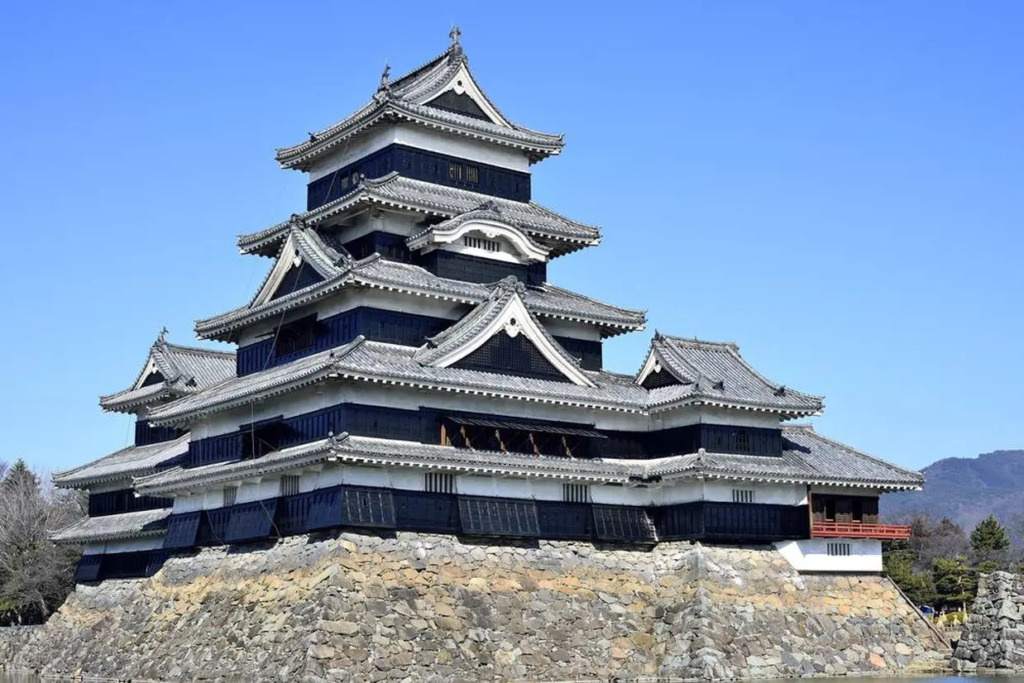
Matsumoto Castle is the symbol of Matsumoto City, Nagano Prefecture. It is the oldest existing five external stories but six internal floors castle keep in Japan and is a national treasure. Featuring a pitch-black keep, Matsumoto Castle is a beautiful contrast of black and white. It is said that the simple and rugged atmosphere of the castle, without any ornate decorations, is due to the fact that it was built during the turbulent period of the Warring States period (1467-1600). This simple beauty is highly valued and has been designated as a National Treasure.
On a clear day, you can see the Alps mountains lining the background. It is worth a visit to see the cool Matsumoto Castle, which was designed for functionality. There is also a long-established bakery nearby, so it is recommended to sit on a bench and relax while viewing the castle.
Kanazawa Castle (金沢城) – Ishikawa
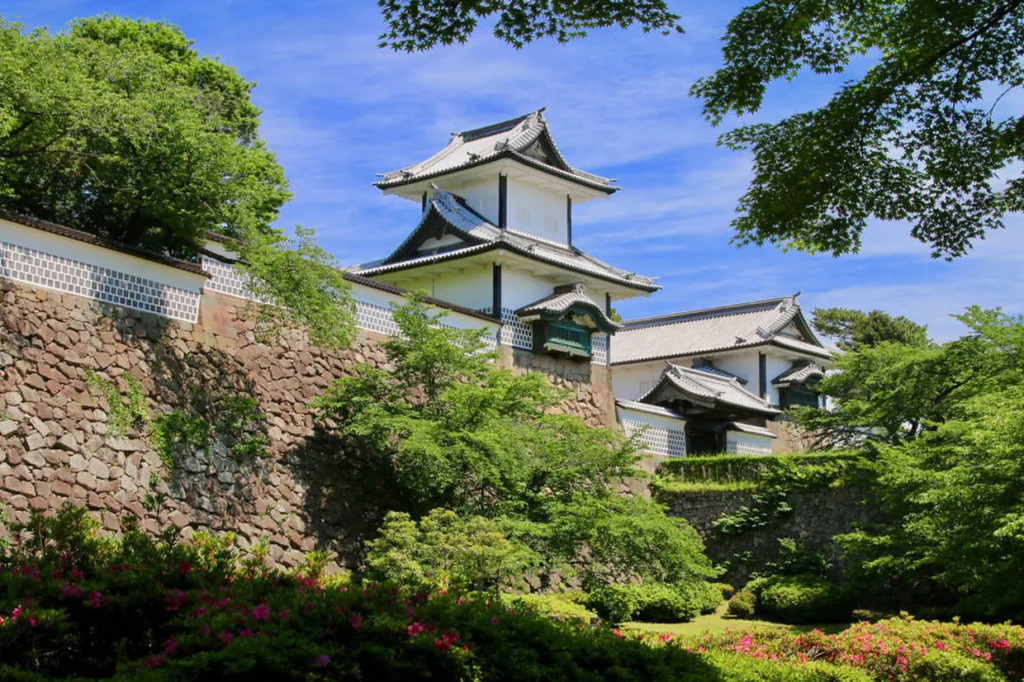
Kanazawa, located in Ishikawa Prefecture, was developed as a castle town centering on Kanazawa Castle, and still retains many tasteful old streets and buildings, as well as traditional culture such as traditional crafts, tea ceremony and Noh drama, and food culture. Kanazawa Castle Park, once the residence of the Maeda family of the Kaga Domain, is a historical space that has been opened to the public and is considered a “treasure of Ishikawa Prefecture,” along with its outer garden, Kenrokuen Garden. The park has been maintained as a place that conveys the history and culture of Kaga, and is a spot where valuable culture remains. At approximately 28.5 hectares in size, it is more than six times the size of the Tokyo Dome, showing just how large Kanazawa Castle was. The castle was damaged by fire during the Meiji period (1868-1912), and only the “Ishikawa Gate” and “Sanjikken nagaya” remain.
Nagoya Castle (名古屋城) – Aichi
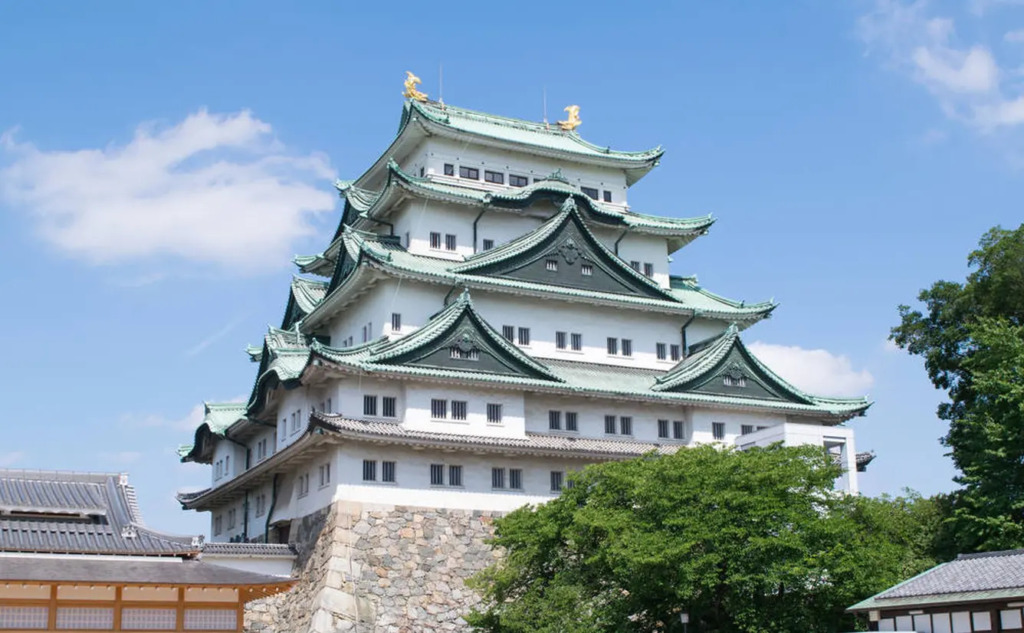
Nagoya Castle is a representative sightseeing spot in Aichi Prefecture. It has been located in the center of Nagoya for about 500 years, and is a familiar place for Nagoya citizens. It is called one of the three most famous castles in Japan, along with Osaka Castle and Kumamoto Castle, and is a must-visit spot for anyone who loves history and castles. The golden Shachihoko at the top of the castle tower is the symbol of Nagoya.
As of 2024, the castle tower is closed due to construction (completion is expected to be in 2032 at the earliest), and although you cannot enter the inside, you can still enjoy just looking at the atmospheric exterior.
In addition to the castle tower, the Honmaru Goten, which was used as the residence of the feudal lord, is also a spot not to be missed. The paintings on the walls and decorative metal fittings provide a glimpse into the architectural and artistic techniques of the period. The Honmaru Goten will remain open despite of the closure of the castle tower, so be sure to stop by.
Hikone Castle (彦根城) – Shiga
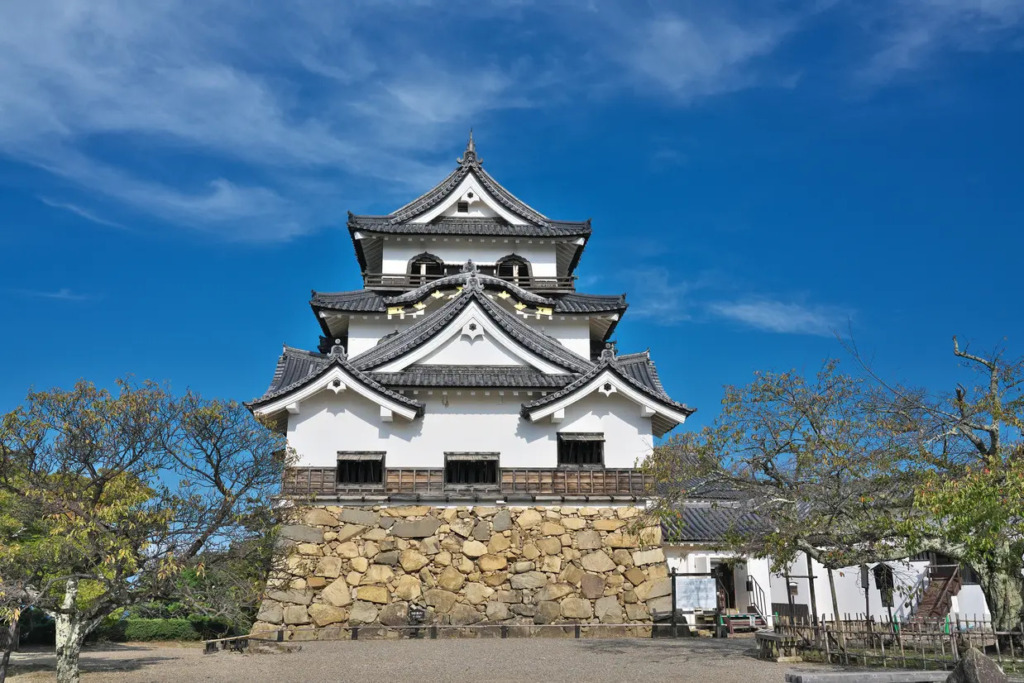
Hikone Castle Ruins is the site of a castle built in 1622 on Mt. Hikone. Well-preserved from a national perspective, it is designated as a special castle site by the national government, and its castle’s keep is one of the five castles designated as a national treasure. Hikone Castle is one of the best castles in Japan, along with Himeji Castle and others. Hikone Castle is particularly beautiful in the moonlight and is one of the eight most scenic spots on Lake Biwa.
The keep has a beautiful exterior, incorporating three different gable styles. The interior is also practically built, as it is equipped with an arrow and gun slits. Visitors can also tour the moat on a boat or by rickshaw.
Osaka Castle (大阪城) – Osaka
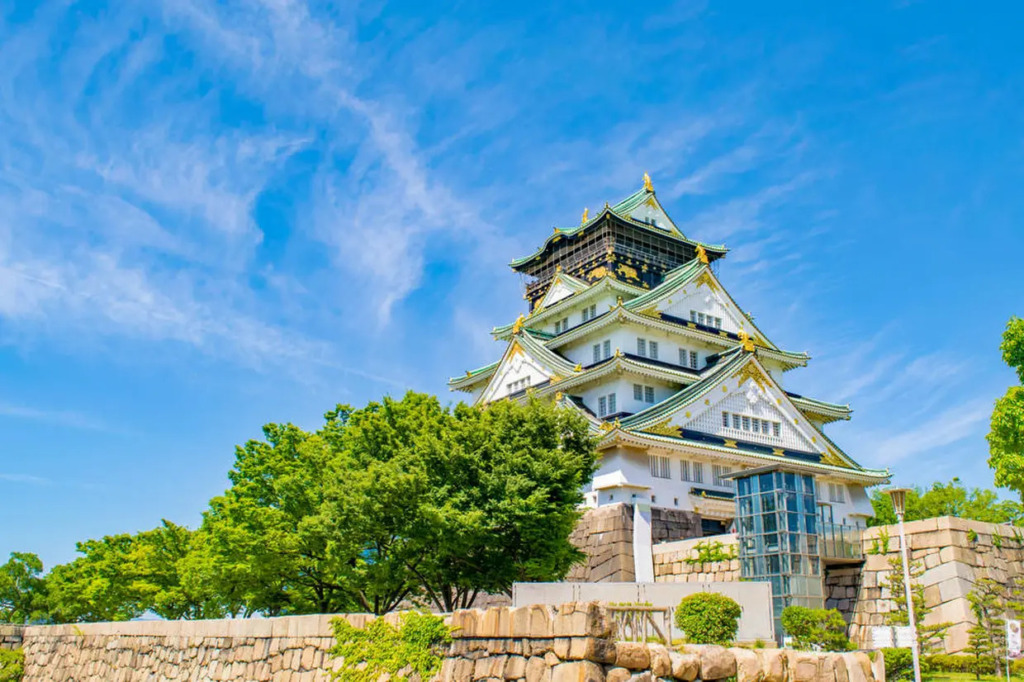
Construction of Osaka Castle began in 1583 by Toyotomi Hideyoshi, who was aiming for unification of Japan. The castle tower, the most central building in the castle’s main circle, was completed two years later, but it too was destroyed by fire with the fall of the Toyotomi clan in a battle. It was rebuilt but burned down again. Since then, Osaka Castle has remained without a keep.
The present keep was built in 1931 with donations from the citizens of Osaka. 266 years after its restoration, the 55-meter-high, five stories on the outside and eight stories on the inside keep is a registered tangible cultural property, with golden ornaments such as the shachihoko on the roof, and the 8th floor observation deck offers a panoramic view of Osaka.
Nijo Castle (二条城) – Kyoto
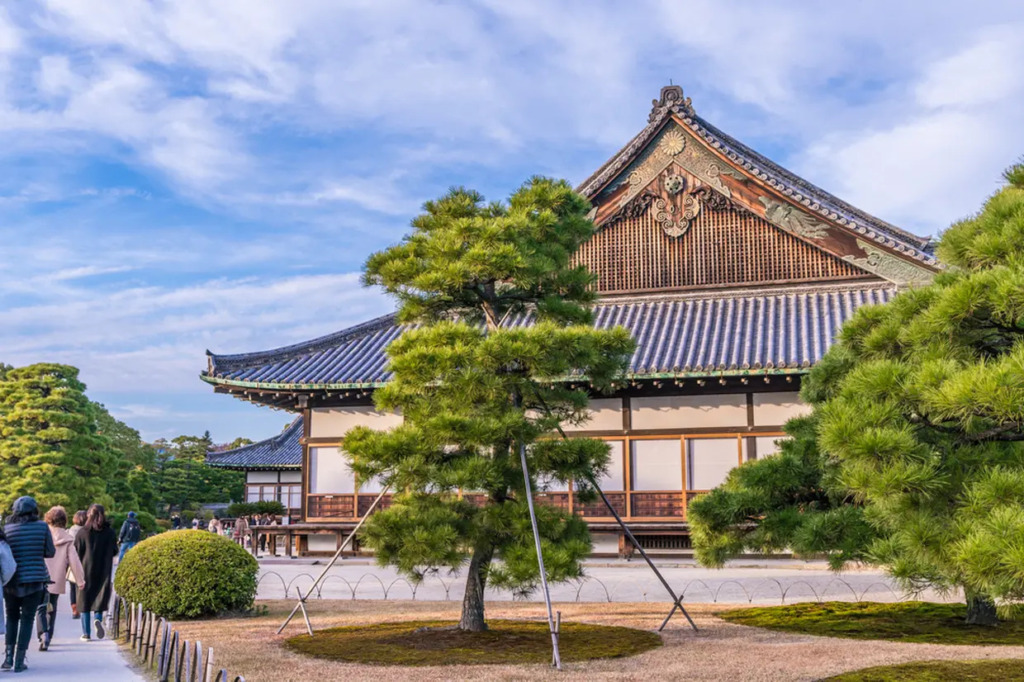
The Nijo Castle area, about 15 minutes by bus from Kyoto Station, has many spots associated with historical events. This area is recommended for history buffs. Nijo Castle was built by Tokugawa Ieyasu, who oversaw the Edo shogunate, which lasted for about 300 years. It is also famous as the place where the Edo shogunate came to an end, and is registered as a World Heritage site.
The Ninomaru-goten Palace, designated as a National Treasure, boasts a magnificent building area of 3300㎡ and 800 tatami mats laid out. It is also famous for its “Nightingale floors (Uguisubari)” corridor, which makes a chirping sound when walked on, and is said to have served as an alarm system to warn people of intruders at that time. The grand hall is surrounded by more than 3,000 dainty murals, giving visitors a sense of its opulence.
Himeji Castle (姫路城) – Hyogo
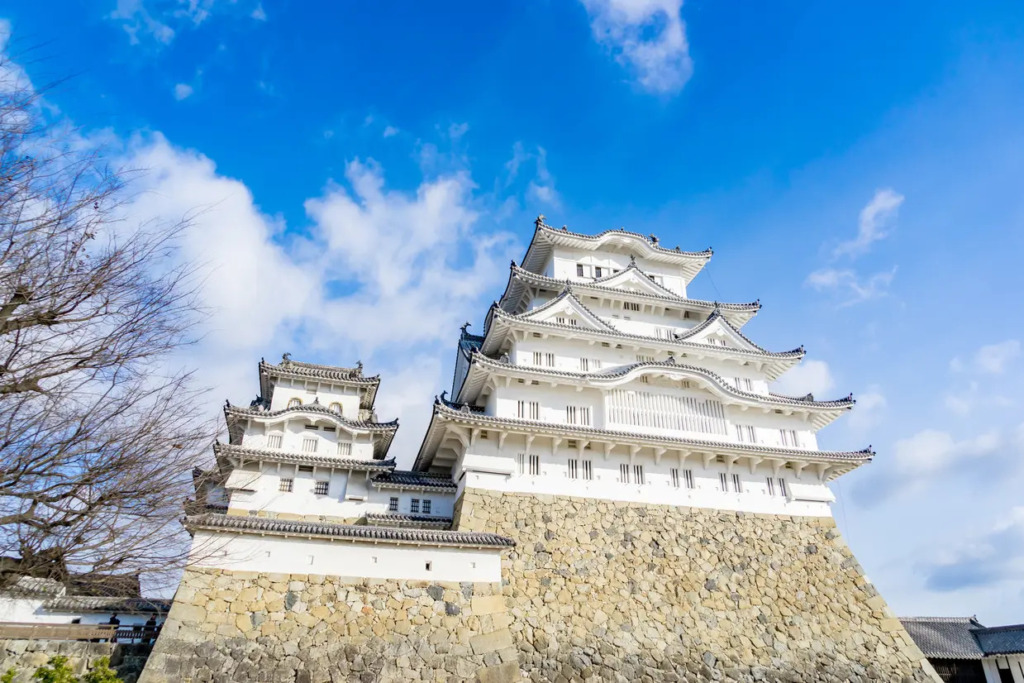
Himeji Castle, a historic site representing Japanese castle architecture of the early 17th century, was the first castle in Japan to be designated a World Heritage site. The castle’s beautiful white exterior is also called “Shirasagi (white heron) Castle” because of its graceful appearance like a white heron spreading its wings, and it is a must-see castle recognized around the world. The current main keep of Himeji Castle was built in 1609, and many other structures remain in their original form.
Historically, Hyogo Prefecture has long been an important region militarily, as it was a strategic point of transportation from Kyoto to the Sanyo and San’in regions. There are many castles and castle towns built from the Warring States Period to the Edo Period scattered throughout the prefecture.
Kumamoto Castle (熊本城) – Kumamoto
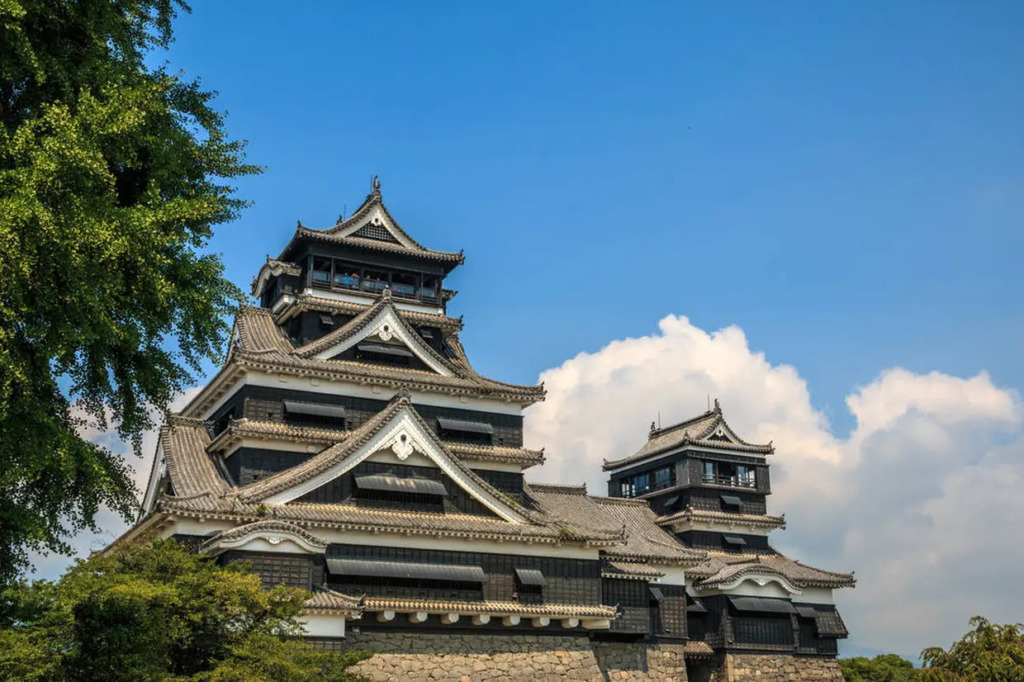
Kumamoto Castle, the pride of Kumamoto, was built 400 years ago by Kiyomasa Kato using the latest technology of the time, and remains one of the three most famous castles in Japan. Kumamoto Castle, also known as “Ginkgo Castle,” is filled with large ginkgo trees, and the beautiful yellow color of the ginkgo trees and the castle make for a beautiful picture during the season. Around Kumamoto Castle, which has a rich history, you can also enjoy a downtown area with an Edo-era atmosphere, as if you have stepped back in time.
What is interesting about Kumamoto’s architecture is the mixture of not only Japanese historical buildings but also Christian culture. If you go to Amakusa area, which is a little far from Kumamoto city, you will find magnificent churches built and enjoy a different atmosphere. The famous “Sakitsu Church” in Amakusa is one of the few churches in Japan built in the stately Gothic style, and is a valuable component of the city’s heritage. The sight of a large Christian church amidst rows of Japanese houses is fascinating.
Kumamoto Castle, the symbol of Kumamoto City, towering majestically over the city center, was severely damaged by the Kumamoto Earthquake in April 2016, but restoration work is progressing moment by moment. The restoration of the castle tower has completed in 2021.
Bitchu-Matsuyama Castle (備中松山城) – Okayama

Bitchu-Matsuyama Castle is one of the 12 existing castle towers and is the only mountain castle with an existing castle tower. The castle tower, which stands near 430 meters above sea level, is an important cultural property of Japan and is the highest mountain castle with an existing tower.
Visitors can see both the “medieval castle for battles,” and the “early modern castle with a stone walls and earthen walls”. From the Kamakura to the Warring States Periods, the castle was used as a “castle for warfare,” and during the Edo Period, it served as the “symbol of Bitchu Matsuyama”.
Takahashi City, where Bitchu Matsuyama Castle is located, is prone to sea of clouds from autumn to spring, and the castle can be seen shrouded in a sea of clouds, a fantastic sight that has earned it the nickname “Castle in the Sky”. The sea of clouds can usually be seen from late September to early April, from dawn to around 8:00 a.m. Especially in the early morning from late October to early December, thick clouds tends to form.
Goryokaku (五稜郭) – Hokkaido
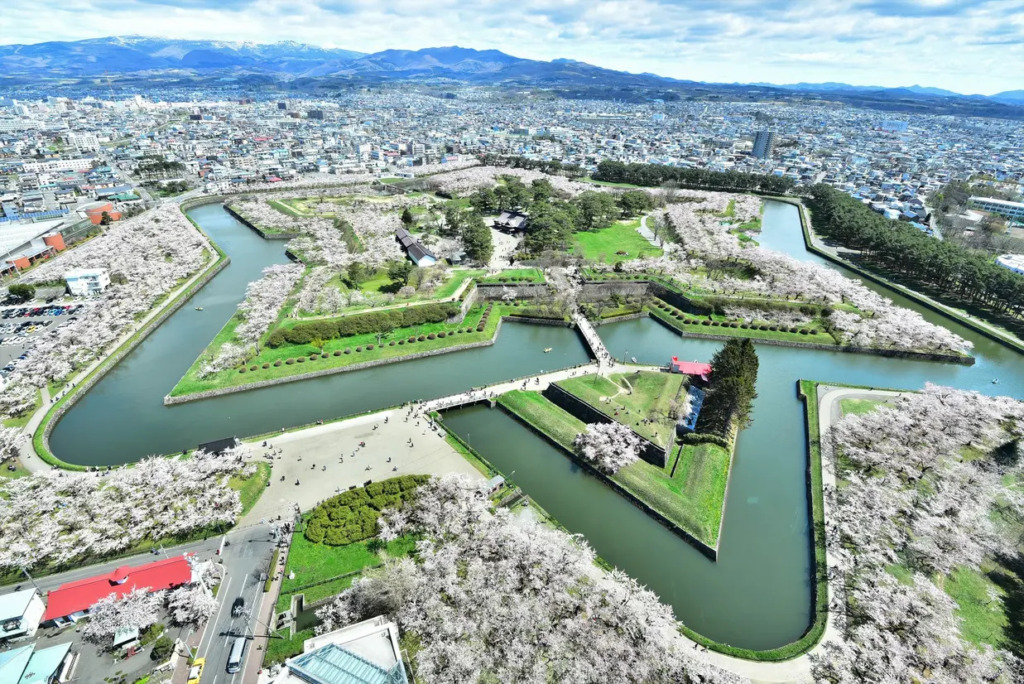
The Goryokaku area was the scene of the Battle of Hakodate at the end of the Edo period and is a representative spot in Hakodate. It is called Goryokaku because of its star-shaped pentagonal appearance with five ramparts called Ryoho. Goryokaku was built for northern security and flourished around it. It has been designated as a special national historic site and has become a popular tourist attraction. Today, it has been transformed into a downtown area with offices and restaurants, and is bustling with many tourists every day.
Goryokaku was built in 1866 as Japan’s first Western-style fortress. It played an important role as the political center of Ezo but lost its governmental function after the Battle of Hakodate. Following its takeover by the new Meiji government during the Taisei Hokan (transfer of power back to the Emperor), most of its associated facilities were demolished. The area was later opened to the public as Goryokaku Park, and today many people can be seen jogging and walking around the park. The park is beautiful in all seasons, with cherry blossoms in full bloom in the spring and illumination around the walls in the winter.
Hirosaki Castle (弘前城) – Aomori
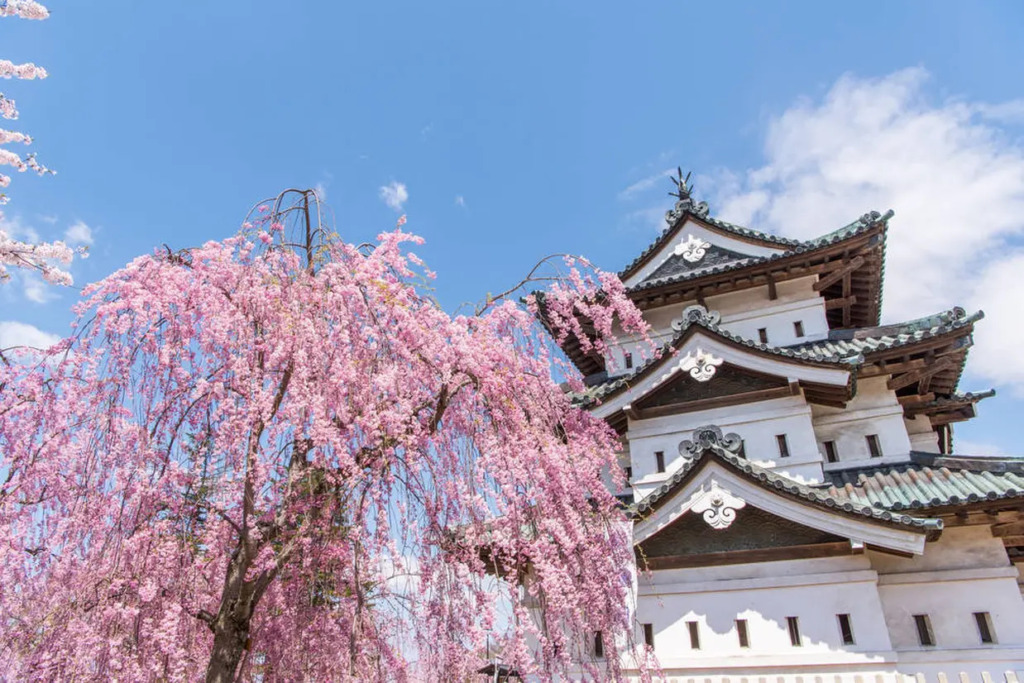
Hirosaki Castle, located in Hirosaki Park, is the northernmost existing castle tower in Japan and the only one still standing in Tohoku region. It is also designated as a National Important Cultural Property. Hirosaki Castle was planned in 1603 by Tsugaru Tamenobu, who unified Tsugaru region, and second-generation, Nobuhira began construction in 1609, which was completed in 1611. Hirosaki Castle was then used as the center of the Tsugaru Domain for 260 years until the Meiji government abolished the domain.
In addition to the castle tower, the park also has a gate and bridges that are full of emotion. It is rare in Japan to find such a large castle fortress that has been preserved in its original form and opened to the public as a park. The park is also famous for its cherry blossoms, which attract many visitors during the spring season.

